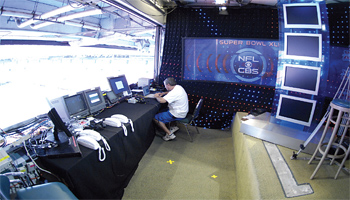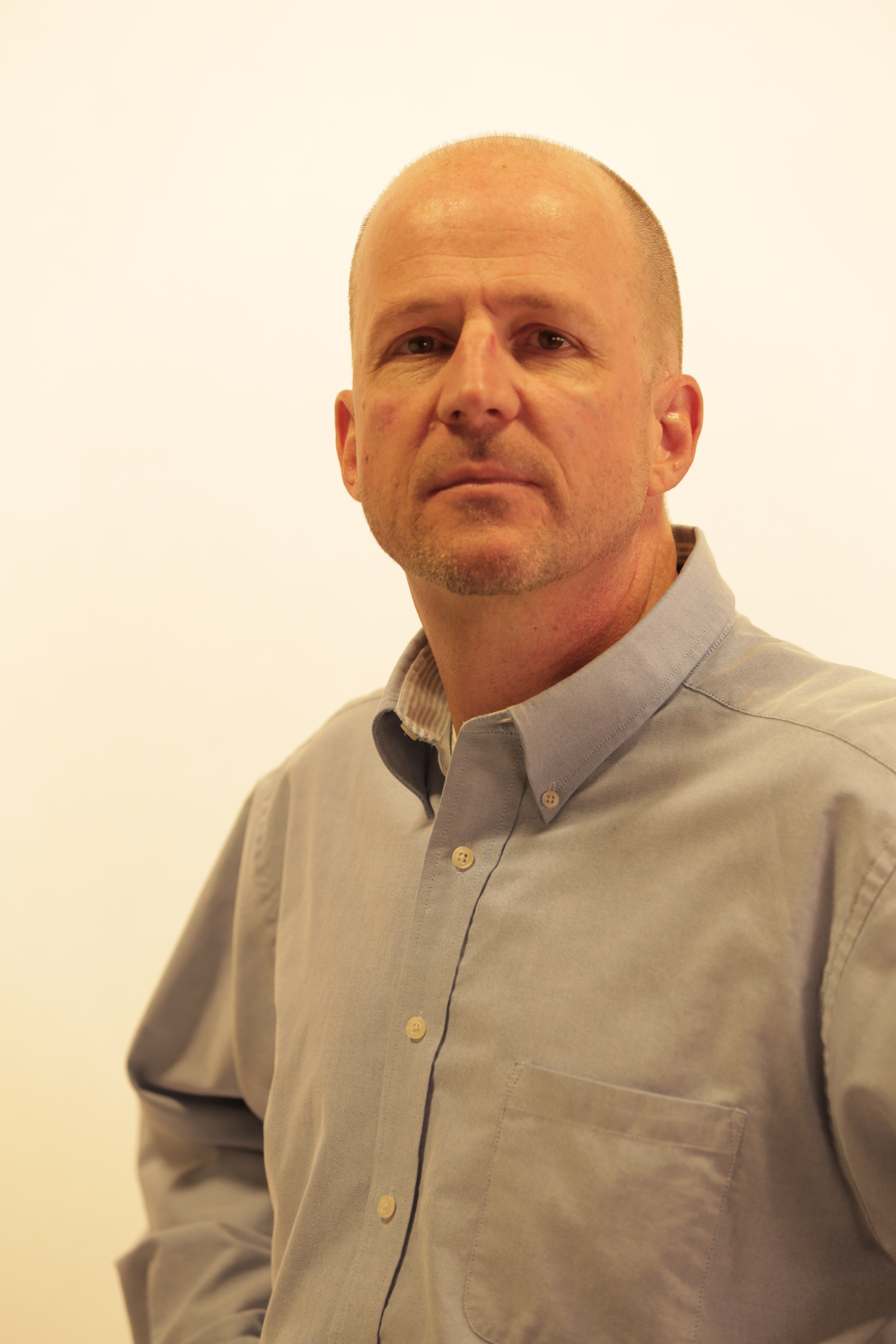CBS Plans Super Coverage

CBS Audio Technician Kevin McHale helps prep the announce booth. Photo: 2007 Jeff Neira/CBS
MIAMI
Super Bowl XLIV, to be held in Dolphin Stadium here on Feb. 7, will be one of the largest globally watched broadcast events of the year if past history is any indication. With an expected 150 million plus viewers in the United States, and millions more from 230 countries and territories worldwide, it will truly be a premiere global television event.
This year, the weight of successfully executing one of the most-watched sporting events in the world is in the hands of CBS Sports. Joining CBS at the helm will be Pittsburgh-based mobile production company NEP, the primary provider of a wide range of equipment required for domestic and global coverage. With a fleet of production trucks and 50 cameras ranging from Super Slo Motion to SkyCams, the Super Bowl is arguably one of the most complicated events to cover.
THE CHALLENGE
CBS and NEP are leveraging their combined experience to provide the viewing audience with a cutting edge, yet unblemished broadcast. According to NEP CTO George Hoover, audiences can expect a show full of myriad camera angles, exciting graphics, and a production quality honed over the past season. “Our crews have been covering many games throughout the season, and it’s always the ‘A’ production team for football, no matter what network is covering it,” he said.
When tasked with an event like the Super Bowl, Hoover says “What you don’t want to do is go into the Super Bowl and change everything, at which point you have lost a season’s worth of practice.” However, Hoover admits that coverage of the big game is more visually exciting than a regular broadcast. “You try to augment and add enhancements to the coverage, but [you] try not to go crazy and compromise the basic coverage of the game,” he said.
CBS has had plenty of experience in trying new technologies at the big game according to Ken Aagaard, senior vice president of operations and production services. “In Tampa for the 2001 game, we tried an untested technology [known as] ‘EyeVision’ and well, we don’t want to do that again,” he said.
Aagaard said the challenge wasn’t just technical, but rather how to work a new element into the overall production. “EyeVision was very complicated and had too many points of failure,” he said. Much like Hoover at NEP, Aagaard’s desire for a flawless production is a priority. “The SuperBowl is not a place where you want to fail,” he said. “You want it all to work. It’s a big show with great pressure on the staff to make sure everything comes together.”
Leaving nothing to chance, CBS and NEP will keep all facets of the technology running with a dedicated power source driven by diesel generators. “Our main compound will be powered by four 500 kW generators provided by Aggreko, all paralleled and sync’ed,” said John McCrae, director of field operations for CBS Sports. “Our edit compound has an 80 kW generator and the Fan Plaza Set will be powered by a fully redundant 250 kW Twin-Pac.” This supplies the broadcast compounds with a guaranteed and managed power source for the event. Even inside the stadium the cameras and announcers’ booth will not rely on stadium power. “Key cameras and all audio from our announcers booth will be solely powered from our protected production trucks,” said McCrea.
MAKING IT HAPPEN
“The biggest challenge is not the game but everything that wraps around it,” said Hoover. The day’s broadcast event consists of separate production units assigned to the pre-show, game, and halftime shows, along with accommodations made for local and international broadcasters. With the Pro Bowl being broadcast in the same stadium just a week earlier by another network, CBS and NEP will face the extra challenge of having less than the usual two weeks for setup after the football season ends. This will dramatically compress the amount of time crews will have to tear down one event and set up for the next. The one benefit, mused Hoover, is the location of the game. Unlike a winter event in Detroit, the balmy climate of Florida is easier on crews and equipment.

“A” games technical director Jonas Einstein in NEP’s SS24 truck. Though CBS airs the game along with its halftime show, the NFL and NEP share in the coordination of the event. This puts much of the technical setup on the shoulders of NEP, and Hoover sees coordination of all of the elements within the facility as his biggest concern. “It is more about the logistics than the technical issues,” he said. Hoover cites as a challenge the New York-based NFL studio show that is taken on the road and into an unfamiliar environment. “While the game guys stay consistent with their regular workflow in the field, the studio guys who normally work an hour show are now faced with doing a full day’s worth of work from a remote location,” he said.
NEP is tasked with making this transition seamless. “We have to replicate the capabilities of systems such as their studio, edit bays, and graphics systems out in the field,” he said. In addition, the size and location of the set has to be coordinated with stadium officials in a fashion that minimizes seat loss within the venue and maximizes visual impact.
Add to an already challenging event, an elaborate halftime show with The Who, and the dynamics become even more complex. The band is contracted separately by the NFL as an entertainment event within the game, and it uses a completely separate production setup, sharing no resources with CBS or NEP. Yet another complicating element is the fact that crews setting up for the game have to do so while the halftime show participants practice for the event.
CBS will use NEP’s SS-24 as their main game truck, which is comprised of two 53-foot double expando units making it one of NEP’s largest mobile facilities. To augment the game truck, NEP will also bring its SS-9 vehicle to accommodate additional cameras, EVS video playback, and a backup GV switcher.
FUTURE COVERAGE
NEP’s Hoover sees the use of ultra-high speed cameras on the rise for future Super Bowls and an ever evolving array of graphics options. When asked about 3D he can see no definitive timeline for its implementation. “Everyone is wondering where 3D is going,” he said.
Aagaard, a veteran of two decades of Super Bowl coverage, predicts “3D will be part of the future landscape, though not for this Super Bowl. He considers 3D to still be an immature technology with issues to fix before it is ready for primetime deployment.
Get the TV Tech Newsletter
The professional video industry's #1 source for news, trends and product and tech information. Sign up below.

